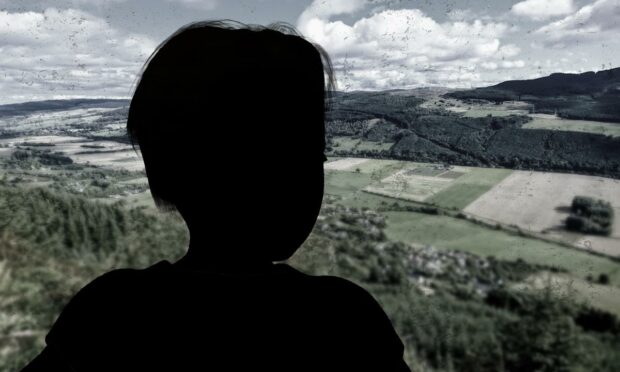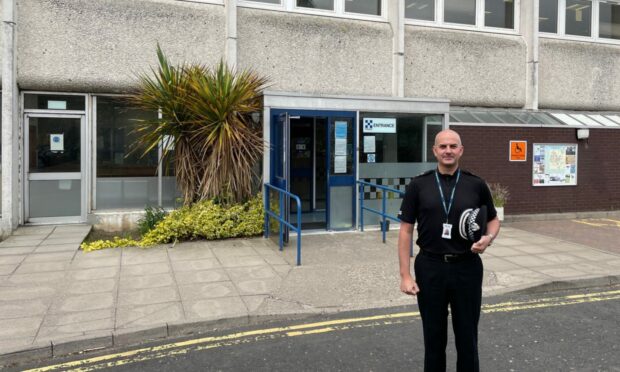The life of a severely neglected young child was only saved after a horrified member of the public noticed their “deathly” complexion and alerted police.
Harrowing details of the case of the pre-school youngster emerged following an investigation which found “significant missed opportunities” for early and effective intervention.
It was noted a “catalogue of concerns” had been raised about the family of the youngster – known as “Child B” to protect their identity – including to social workers and so-called “named persons” in the Perth and Kinross local authority area.
A report found it had been “insufficient to prevent the health crisis for Child B which may have, without intervention, been fatal”.
Child B was admitted to hospital, and was found to have severe anaemia, an extensive headlice infection and teeth which were decayed and described as ‘stumps’.
A significant case review (SCR), led by Perth and Kinross Council improvement officer Julie Baker, found 25 improvements had been made in the wake of Child B’s hospitalisation.
The review also made a further 16 recommendations to tighten up procedures.
Police have now confirmed they are reviewing a previous decision not to investigate the case, we can also reveal.
Harrowing findings
The shocking details include:
- Child B had to have urgent hospital treatment, including a blood transfusion, after being found to be suffering from severe anaemia, an extensive headlice infection and teeth which were decayed and described as “stumps”.
- The family home was “uninhabitable”, but the “dirty and unsanitary” conditions had previously not been treated as childcare concerns by officials.
- Five referrals were made about the family to social workers between 2013 and 2018 and should have triggered a “fuller assessment”.
- A failure to look at the role of the father in the family was described as evidence of “institutionalised sexism”.
- There was a “significant variation” in performance of “named person” officials, with “insufficient attention” paid to gathering and assessing information.
- The youngster was a “hidden child” due to the family’s rurality and poverty.
The case dates back to early 2018 but the findings can only now be made public after an inquiry was delayed by the Covid-19 pandemic.
It was triggered when a member of the public contacted police after becoming “extremely concerned” about the child’s “deathly” pale presentation.

Child B was admitted to hospital, and was found to have severe anaemia, an extensive headlice infection and teeth which were decayed and described as “stumps”.
Urgent treatment followed, including a blood transfusion, with healthcare support continuing over several weeks.
‘Uninhabitable’ home
The family home was found to be “uninhabitable” for the children and an immediate interim safety plan was put in place.
An early assessment found that concerns had previously been raised about the older children in the family between 2013 and 2018, relating to poor home conditions,
physical presentation, inconsistent and low attendance at school, and rent arrears leading to eviction.
Social workers had been involved, and “several” officials in named person roles, but it had been “insufficient” to properly protect Child B.
The report concluded: “The severity of the neglect Child B was subjected to and its critical impact on Child B’s health and wellbeing could not have been predicted.
“However, given the extensive history of concerns around poor home conditions, poor physical condition of the children and failure to evidence any sustained improvements over the five-year period of involvement with social work and named person services, it was predictable that Child B and the other two children in the family would continue to
experience neglect which was going to become chronic and entrenched in nature.”
It was found that social workers and named persons involved did not view the “dirty,
unsanitary and ill-equipped” home conditions as childcare issues, and that “numerous concerns were never collated or fully considered”.
Five referrals in five years
There were five referrals to social workers between 2013 and 2018 which “should have triggered a fuller assessment of the children’s needs”.
When the family moved from one area of Perth and Kinross to another, the report said it was clear that “insufficient information was shared between the children’s schools and nurseries”, which affected the decision-making in their new school and nursery.
Institutionalised sexism was another factor found in the review, with all of the focus said to have been on the mother.
The role of the father in the care and protection of his children was “at best, overlooked and at worst, not even considered”.
Named persons
One of the “most pressing concerns in this case” related to issues with the named persons, and a “significant variation” in how these responsibilities were discharged by different professionals at different times.
The family did not have a designated lead professional until January 2018, which was described as “not acceptable”.
The report said: “It appeared that professionals in named person services paid insufficient attention to gathering and making sense of the information held on the family within their service or agency and what it meant for the care of the children.”
It appeared that professionals in named person services paid insufficient attention to gathering and making sense of the information held on the family within their service or agency and what it meant for the care of the children.
A Scottish Government bid to roll-out the “named person” scheme across Scotland proved hugely controversial before being dropped.
However, many local authorities and health boards continue to operate the system, whereby a designated official is assigned to each child, usually a health visitor and then a teacher.
Rural location
Apart from several months in temporary accommodation in Perth, Child B’s family lived in a rural location, and were in poverty, even though both parents worked.
The review said: “The seasonal nature of work in rural Perth and Kinross does not sit easily with receiving benefits.”
It added: “Child B’s was a ‘hidden child’ due to the rurality and poverty the family lived in, which meant that Child B’s poor physical condition would not be observed by others.”
Meanwhile, it was also ruled that in the months before Child B was born, issues with the family meant a referral should have been made through the NHS Tayside Unborn Baby Protocol.
As well as the findings where lessons could be learned, the review noted “strong
evidence of good and effective practice taking place at different times in this case
and some good practice examples which are worthy of note”.
This included a housing association and council housing service working with the family on issues such as rent arrears, and a health visitor who made regular visits to the family and raised many of the concerns.
Barbara Renton, chairwoman of the Perth and Kinross chief officers’ group, said: “Whilst recognising that this was, at times, a very challenging and complex case for the agencies involved, it is never acceptable when a vulnerable child is exposed to significant harm.
“The chief officers’ group has acknowledged the findings and accepts all of the recommendations included within the SCR report.
“Whilst noting the amount of improvement work already undertaken across the partnership, we will continue to receive regular updates on the recommendations, through the work of the child protection committee.”
Whilst noting the amount of improvement work already undertaken across the partnership, we will continue to receive regular updates on the recommendations, through the work of the child protection committee.”
Bill Atkinson, independent chairman of the Perth and Kinross child protection committee, said: “It is important that we continue to learn the lessons from reviewing our work to keep children and young people safe from harm, abuse and neglect.
“National and local guidance sets out the circumstances in which a SCR should be undertaken and I would like to thank the lead reviewer for the thoroughness of this SCR report.
“This report, not only allows us to learn lessons and make improvements, but allows us to consider further the needs of our dedicated and committed workforce, which works together to provide better outcomes for children and young people across Perth and Kinross.”
Chief Superintendent Phil Davison, police divisional commander for Tayside, said: “As a member of the Perth and Kinross chief officers’ group, Police Scotland welcomes the findings from the significant case review into Child B and accepts the recommendations made in full.
“The previous decision by Police Scotland not to proceed with an investigation in this case is currently under review.”




